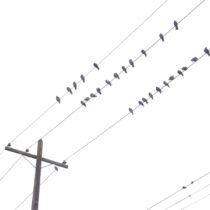Landscape Architecture for Landscape Architects › Forums › PROFESSIONAL PRACTICE › The new LARE: Section 3. Thoughts and study topics
- This topic has 1 reply, 7 voices, and was last updated 11 years, 2 months ago by
 Tosh K.
Tosh K.
-
AuthorPosts
-
October 11, 2012 at 3:59 pm #156236
 Eric GalvinParticipant
Eric GalvinParticipantDecided to take Section 3 now that the new formatting is done. Here is a link to the video that shows a sample question. http://www.youtube.com/watch?v=vggoziBoz9M&t=3m19s Basically it looks like the old test, without the drawing part…so not the old test at all. Now we are almost in the roll of the tester, having to decide on what parts of the drawing are done correct and incorrect, as well as placing site elements.
Basically, im trying to figure out what to be competent in. I have lots of experience with site layout stuff, planning for residential neighborhoods, shops and commercial areas, day cares, schools,etc., so i am not too scared of the test, but i would like to lay down my thoughts and ideas of what to study for and what subjects will come up. CLARB’s list is interesting:
• Synthesize Site Opportunities and Constraints
• Refine Program
• Create Design Alternatives
• Analyze Design Alternatives
• Develop Concept Narrative
• Refine Conceptual Design(s)
• Prepare Conceptual Renderingsthe rest: https://www.clarb.org/Candidates/Documents/CLARB-LARE-2012-Exam-Specifications.pdf
While i appreciate the fact that they are trying to get across the idea that they are testing me on “designing”, it would be infinitely helpful to know the type of designing we will be doing and the subjects that are being tested. Most landscape architects understand that “creating design alternatives” are drastically different for a day care vs. a zoo vs. a boardwalk vs. a multifamily development vs. a seating area… you get the idea. Landscape architects design a lot of different things, which subjects are we being tested on? I have gone through a few years of notes from reading others perspectives on the previous section C, as well as seeing some redlined examples, both correct and incorrect , and i have compiled a list of subjects that i believe we are being tested on below.
I look forward to hearing back from anyone on this list and the questions i have laid out, and i hope that we could make this thread a bit of a resource for those preparing for Section 3 in the future.
Section 3 Topics:
-Circulation (Vehicular and Pedestrian)
-Parking lots:
Location, environmentally sensitive, convenient, safe, basic dimensions of isles, parking stalls, one way and two way traffic concepts and signage, handicap locations, drop off areas, turning radii, stacking issues, transit design, bypass lanes, drivethrus, signage and wayfinding, safety safety safety, minimize conflicts
-Walkways/trails
safety, convenient locations, connecting to appropriate areas and ADA compliance, curb ramps, crosswalks
-Roads
intersections, sight triangles, turn-arounds, hamerheads and alternatives, cul-de-sacs,
-Soils
bedrock, water tables, soil suitability, slope stability,
-Recreation Fields
suitable locations, orientation, grade,
-Small Site Design, Parks (large and small)
walkways, seating areas, planting for accents, planting for shade/microclimates, planting for screening, playgrounds, camping, compatibility of uses and locations, trail design, sound control concepts,
-lighting design
safety, basic footcandle concepts
-Larger Site planning
basics of roadways, commercial areas, residential areas, use compatibility, safety, environmental protection (not real in depth), parking and relationships to uses, adjacent uses and compatibility, phasing plans, landuse plans, basic graphic conventions, sound control
-earthwork analysis
cut and fill
-security and crime prevention
-basics of rendering techniques and types of drawings? graphic communication
sections, perspectives, symbols
Topics im not sure about: energy and resource conservation, sustainability, vertical road alignment, any stormwater and grading issues in 3, materials and components (what materials?, what components?, there are tens of thousands..)
and of course a lot of this test is just about following directions and thoroughly reading problem statements correctly and amking sure you have the approriate setbacks and sizes of objects. ASLA has some good notes on where people screw up here: http://www.asla.org/ContentDetail.aspx?id=31146
and sample vignettes (old section 3) here:http://www.asla.org/lareprepsamplevignettes.aspx
Ive tried to make this list comprehensive, but i have not taken the test, so its just my best effort. I look forward to hearing anyone else’s thoughts on what might be missing, what might be too in depth, what areas dont really need focusing on, etc.! – eRic
October 12, 2012 at 3:01 am #156247 Tosh KParticipant
Tosh KParticipantIf the video stuff looks similar to old stuff, then the older vignettes are probably a good base line to use. Not having to draw it should allow you to concentrate on the information at hand and not make irrelevant mistakes (which I think is one of the intents of the new format). Anything in the “manual” sections are game (it’s their version of a code).
If I recall correctly, energy and resource conservation is more or less focused on things like saving trees and watercourse setbacks (knowing what’s in the mock-code they give you and working around them).
Sustainability – I didn’t see much, I assume more habitat and resource conservation, maybe knowledge on natives?
Vertical road alignment – covered in any roadway textbook, can’t remember seeing them in the newer vignettes.
Stormwater/grading – there isn’t supposed to be, other than real basic stuff (put the building on slopes less than, etc)
Materials and components – basic detailing, and yes this is the biggest pile you need to know; there are lists floating around from prep courses (section D stuff mostly I would assume) as well as prep manuals. Know wood, metals, connection types and when you use them, be able to look at a detail and know what part is wrong/missing that is most critical (walls, decks, bench on walls, light/sign bases, etc).
Try to find someone that has access to some recent prep materials, they’re invaluable. Just remember that they are testing for minimal competency in providing public health safety and welfare; a lot of the problems in the old section D and C were pretty simple as long you didn’t out think the question.
Good luck
October 12, 2012 at 1:21 pm #156246 Eric GalvinParticipant
Eric GalvinParticipantThanks Tosh. I agree that one of the points of the new style test is to minimize random mistakes that cause a fail. I have been able to get my hands on a few redlined vignettes, and some of the mistakes people make are fairly simple to not make (not following setbacks or other info from the reference manual). Luckily i read code for work everyday, then design site based on it, so i might have a leg up on that part, i just have to make sure to think in “clarb terms” and not real world designing. This time around, they are not providing the reference manual in the pre-test prep material, wonder how that will work in the end….
Good info on the materials. I need to buckle down in that department. Thanks again! If CLARB ever posts the practice test, i will take them and talk about what was on them in this post for others viewing it in the future.
October 31, 2012 at 10:17 pm #156245 Julia S. ShuartParticipant
Julia S. ShuartParticipantThanks for all the info, Eric. The new format definitely throws a wrench into things because all of the practice tests I have from the old C are in the vignette format. I wonder if there will be multiple choice items on turning radii for trucks vs. cars, etc. I already passed C but since I did not pass D I have to now take 3. Not fun. I will post here again when I gather my notes (I saw your post to my post about needing more 3 and 4 practice material). Thanks.
JSS
November 4, 2012 at 10:06 pm #156244 Sarah NicoleParticipant
Sarah NicoleParticipantThanks for starting this thread, Eric.
In the LARE Orientation Manual (June 2012) there is information on fasteners, reinforcing, materials, lumber / timber, and wood member sizing — but there are listed as necessary for Section *4* — not 3.
However, CLARB’s Section 3 topic list indicates we should “investigate, verify availability, and select design materials and components” as part of Section 3, so now I’m confused. The Section 4 topic list indicates the need to prepare construction details, but doesn’t give more detail beyond that.
It’s hard to understand how the material from Section D is now being divided between Sections 3 and 4.
November 6, 2012 at 1:09 pm #156243 Eric GalvinParticipant
Eric GalvinParticipantCouldnt agree more. Im having trouble deciding how much effort to put in to details and materials because of the exact sentences you quote. Im going to attend the online webinar discussed here https://land8.com/forum/topics/lare-sections-3-and-4-new-format-intel-needed and hopefully that will answer the questions tomorrow. I will post any new info i come across.
November 7, 2012 at 11:01 pm #156242 Cheryl CorsonParticipant
Cheryl CorsonParticipantGlad to find this thread. I will take sections 3 & 4 in December, and I too, am unclear as to what former Section D content will show up in 3. If little does, then there will be a lot crammed into 4 it seems.
February 8, 2013 at 11:16 pm #156241Jose
ParticipantFound this Thread on Section 3. Looks like some of you may have taken the December exam. How did it go? Anyone mind sharing any lessons learned from the exam?
February 8, 2013 at 11:26 pm #156240 Cheryl CorsonParticipant
Cheryl CorsonParticipantWell, I passed Section 3, though not Section 4 in December. There were lots of design related questions in Section 3 that came from Timesaver Standards in Landscape Architecture. The P2P book on the old Section C was helpful as well. Items included noise abatement, bike travel, parking lot layout and safety…For section 4 I will refocus on lighting, irrigation and concrete work. Pass rates for Section 3 were 68% and for Section 4 only 45%.
February 10, 2013 at 10:44 pm #156239 Matt Mathes PLAParticipant
Matt Mathes PLAParticipantIllinois Chapter ASLA – 2013 LARE Review & Prep Session
- Friday Feb 22, 2013 1PM to 5:15PM Section 1 & 2
- Saturday Feb 23, 2013 8AM to 5PM Section 3 & 4
Location: Chicago, Illinois – (West of Downtown – facility location TBD)
The ILASLA Education Committee is pleased to invite Emerging Professionals and LARE Candidates to participate in a fast moving session for reviewing the content for Section 1 & 2 Friday half day as well as Section 3 and 4 Saturday full day. The format enables candidates to view strength and weakness, to preview problem styles, experience drilling, discover success factors as well as hear an over view of exam content to enhance overall exam performance. The session features slides, allows for discussion and individual questions, plus supplemental handouts and post session follow-up via email. The session uses a proven, affordable format featuring one book of study materials per section published by PPI, Inc. The proven course format has helped over 250 successful candidates since 2008 offered by Washington, Louisiana, Tennessee, Prairie Gateway and Sierra (CA) Chapters, with instruction by landscape architects Matt Mathes, PLA, ASLA and Erik Sweet, PLA, ASLA. The instructors both speak nationally as published authors and recognized experts on LARE content. Matt serves on the ASLA LARE Subcommittee, co-presented Section 4 at the 2012 annual meeting and serves as Water Conservation PPN Chair. Erik previously served on the LARE Subcommittee and is a sports facility design expert, including a Chicago Bears project.
Section 1 & 2 Sessions Friday Feb 22 (1PM to 3PM, 15 minute break 3:15PM to 5:15PM) includes the following format starting at 1PM for Section 1 and at 3:15PM for Section 2:
- Overview of LARE Exam Specifications
- Basic Problem Types, Exam Trends & Success Factors
- Drilling on basic problem types and vocabulary of 75+ key terms
- Individual Prep Plan based on Strengths and Weaknesses
Section 3 Session (8AM – Noon, include 15 minute break) includes:
- LARE Section 3 Overview of Exam Specifications
- Basic Problem Types, Exam Trends & Success Factors
- Technical topics
- Other Resources & Individual Prep Plan based on Strengths & Weaknesses
Section 4 Contents (1PM to 5PM, include 15 minute break) includes:
- LARE Section 4 Overview of Exam Specifications
- Basic Problem Types, Exam Trends & Success Factors
- Technical topics
- Construction Materials & Assemblies
- Construction Documents (order, sequence, content)
- Bidding and Construction Administration procedures
- Other Resources & Individual Prep Plan based on Strengths & Weaknesses
For sign-up and session pricing options, go to: http://il-asla.org/meetinginfo.php?id=80&ts=1359584280
Kenon Boehm, ILASLA Education Committee Chair
February 11, 2013 at 4:59 pm #156238 Eric GalvinParticipant
Eric GalvinParticipantAgreed! as soon as i saw the fact that the exams would be 50 questions, my jaw dropped. First time clarb has done something so useful That, combined with the study topics ASLA has provided are making this test much more reasonable and on par with other professions.
February 11, 2013 at 9:31 pm #156237Jose
ParticipantThanks for the feed back! If any of you are intrested in discussing topics within section 3 let me know. I wouldnt mind a live chat. I’m not that involved with my local chapter, so I dont know to many people who are taking the exam. So talking to someone about it would be appreciated!
-
AuthorPosts
- You must be logged in to reply to this topic.

